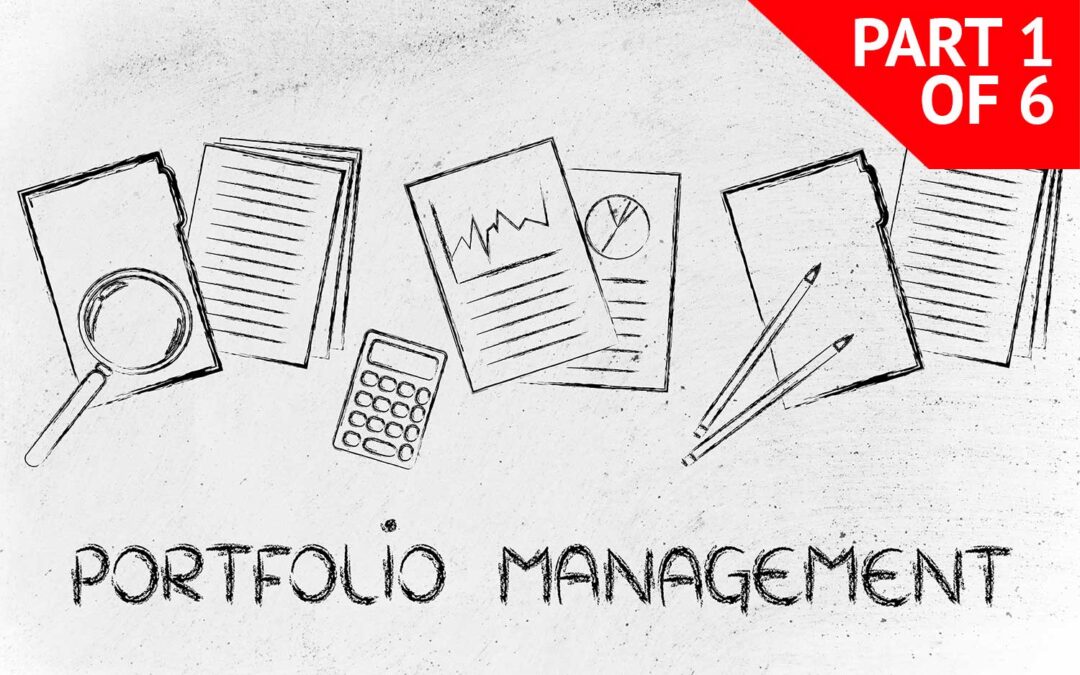Good portfolio management consists of two processes:
- Doing the right projects (Portfolio Definition)
- Doing the projects right (Portfolio Delivery)
This is the first in a 6-part series. In this Insight we are shining a light on Portfolio Definition (doing the right projects).
Almost all organisations face the dilemma of having too many initiatives (projects and programmes) for the available resources. At the same time, organisations face other pressures such as:
- not enough staff
- too many conflicting objectives
- multiple stakeholders that are hard to manage
- major change that is fast approaching
- need to look beyond crisis management.
It is hardly surprising that many organisations struggle with their portfolios as a result.
The good news is that help is at hand. In our experience, the key to success is the ability to focus on prioritising programmes and projects so that the organisation can be confident that it is investing in the right initiatives. There are now tried and tested ways of doing this in a manner that provides for tangible and intangible value, is backed by academic rigour and gets stakeholders aligned using a transparent process with clearly defined steps.
But before we get to prioritising methods; there is now a significant body of literature on portfolio management overall. Unfortunately, for those who are not experienced practitioners, it can be hard to understand the realities and practical implications of some of the advice. It’s one thing to complete a course, it is another to understand its application in practice and to navigate the organisational issues that come with portfolio management. Like many things, the ‘people’ component is what can make it complicated.
The ‘go to’ standard for portfolios is Management of Portfolios (MoP®). Management of Portfolios provides a set of principles and practices to help organisations ensure their programmes and projects contribute to strategic objectives. The MoP handbook was originally published by the UK Cabinet Office; Catalyze supported its development, providing several case studies. MoP is now one of a suite of publications available from AXELOS Global Best Practice.The Management of Portfolios (MoP) handbook via the Axelos site can be accessed here: https://www.axelos.com/best-practice-solutions/mop.
Portfolio Management has come to the fore as organisations have become increasingly aware that delivery is only half the battle (or even less). Just as important is whether or not their initiatives are the ‘right’ ones and whether they meet strategic objectives and/or realise the potential return on investment. Portfolios represent the totality of an organisation’s investment in the changes required to achieve its strategic objectives. The programmes and projects undertaken are prioritised in terms of their contribution to the organisation’s strategic objectives and overall level of risk.
MoP includes five flexible principles for successful approaches to portfolio management:
- Senior management commitment
- Alignment with the organisation’s governance framework
- Alignment with the organisation’s strategic objectives
- The use of a portfolio office to support senior-management decision-making
- Working within an energised change culture
From Management of Portfolios, AXELOS
Portfolio Definition
According to MoP, Portfolio Definition is the “left brain” of Portfolio Management. It describes the process steps to one of the most important strategic decisions senior executives make – defining the organisation’s portfolio and the allocation of resources across it. What gets selected to be in the portfolio will have a big impact on organisational focus, the resources consumed, and the outcomes achieved. There is a big difference between applying Portfolio Definition for the first time and applying it to a well-defined portfolio with an experienced team.
In the second part of this series, I will walk through some of the considerations and recommended approaches for getting stakeholders aligned on what will deliver the best outcomes for the organisation, taking into account tangible and intangible value and a value for money approach.



Recent Comments